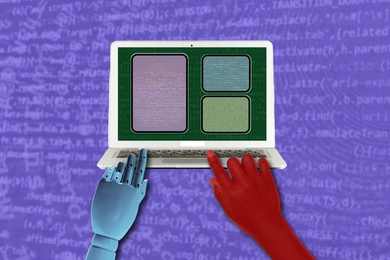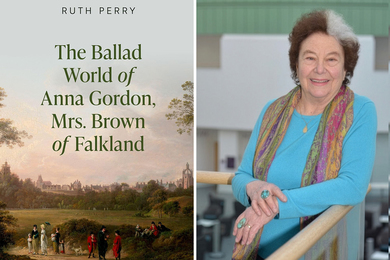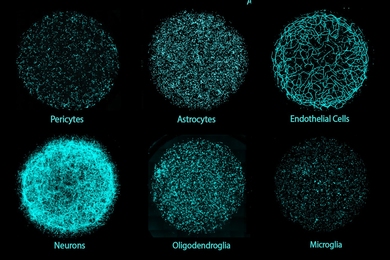'Tis always the season for Barry Kudrowitz to think about toys.
A doctoral student in mechanical engineering, Kudrowitz specializes in toys: He plays with them; he designs them; and he pioneered MIT's first course in toy design, now in its third year.
Kudrowitz often gets asked to name his favorite toy, especially at this time of year: Who wouldn't want to know what might top an MIT toy expert's wish list?
"The toys I love usually fit into one of three categories: Toys that allow me to create freely; toys that are humorous, weird, gross or random; and toys that are elegantly designed and simple, like magnets," he said.
Kudrowitz, whose MIT office is lined with toy projects and toy parts, began his design life building an Epcot theme park out of LEGOs for childhood friends. He has already worked with big-name toy companies like Nerf and its owner, Hasbro.
He has also written extensively on toys and play: His 2006 MIT master's thesis explored new concepts for projectile toys, and his undergraduate thesis, completing his 2004 bachelor of science degree from the University of Central Florida, offered alternative forms of extreme thrill rides.
His Florida roots did much to inspire him, Kudrowitz said: He grew up near 20 theme parks--including eight major ones such as Epcot, Magic Kingdom and Universal--and to this day, theme parks are his favorite form of play.
"Storytelling is an important element in toy design, and I try to incorporate it into the toy class. Some theme-park attractions and interactive shows are the ultimate form of storytelling. They put you inside the story," he said.
Children get inside the story when they play with toys, Kudrowitz noted, but adults need more of a nudge, if they've lost the ability to immerse themselves in a fantasy world.
"Theme-park attractions get us to suspend our disbelief. The most serious of adults will flinch at the 100-foot dinosaur that swings down to eat you; they'll squirm when the 'rats' crawl around by your feet or cheer when you get rescued by the superhero," he said.
For Kudrowitz, suspension of disbelief--getting grown-ups to stop making sense--is a toy- and play-specialist's dream. So his doctoral dissertation focuses on design for entertainment.
"I'd like to research adult play; it seems to be an area that is not very well developed. Adults needs play, too. I want more options than poker and Scrabble," he commented.
Kudrowitz has worked on immersing people in play as a 2005 member of an MIT product design class and in a 2006 externship with 5-Wits, a Boston-based interactive entertainment company.
In the externship, the class worked on 5-Wits' Boston adventure, Tomb, which immerses adventurers in a dark Egyptian maze. In the design class, Kudrowitz worked on a 5-Wits show at the International Spy Museum in Washington, D.C., an interactive adventure in which participant-spies race to save the world from nuclear madness.
Kudrowitz and his team developed new special effects and plot elements for the show, Operation Spy. They also designed and prototyped an elevator simulator that features Kudrowitz's favorite inside-the-story experience.
Now part of the exhibit, their elevator is a stationary steel-grated room whose walls "scroll" up and down to make it appear to move and whose floor pulsates, thanks to an attached industrial vibrator. "With light and sound it seems very realistic," said Kudrowitz.
A scale model of the elevator sits on Kudrowitz's desk. "Basically, you're in a cage that shakes," he says, holding it up.
The little elevator is a case in point. By itself, it's got a dollhouse appeal. In Kudrowitz's hand, it's a story and it's a toy.
"A great toy is something that you always have out on the desk. It's something you can't wait to show the next person who walks into the room," he said.
A version of this article appeared in MIT Tech Talk on December 12, 2007 (download PDF).






